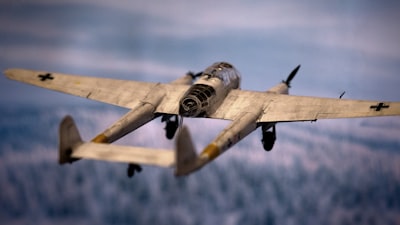Flying for 48 Hours: Endurance, Sacrifice, and the Human Cost Behind B-2 Bomber Missions
Flying a B-2 Spirit stealth bomber for two days straight isn’t just an impressive feat of modern aviation—it’s a staggering test of human endurance and resilience. The record-holding pilots who’ve pushed the boundaries of what’s possible in the cockpit reveal a rarely-seen world, where exhaustion, responsibility, and strategic necessity collide.
The Reality: Where Machines Meet Their Human Limits
The B-2 bomber, with its nuclear strike capability and astonishing globe-circling range, is engineered for missions where stopping isn’t an option. But those marathon flights—some lasting 48 hours or more—also test the physiological and psychological limits of the two-person crew.
"It doesn’t matter how much automation you have. At hour 30, you’re not at your sharpest," notes one veteran pilot. "It’s the closest thing to a time warp. Your body doesn’t know which way is up."
Key Challenges B-2 Pilots Face:
| Challenge | Details & Examples |
|---|---|
| Sleep Deprivation | Limited rest is possible on-board; pilots train with anti-fatigue drugs and napping strategies |
| Physical Strain | Sitting motionless for hours in a high-pressure environment leads to back pain, muscle fatigue, dehydration |
| Mental Pressure | The burden of potentially carrying nuclear weapons; need for constant alertness on long, quiet stretches |
| Mission Complexity | Mid-air refueling, real-time weather and threat adjustments, and classified reroutes |
Why Push These Limits?
Flying non-stop for days is a strategic choice—maximizing surprise, minimizing vulnerability on the ground, and showcasing the United States’ global reach. The B-2’s unique capabilities allow it to strike from US territory to virtually anywhere on the planet, underscoring its value in modern deterrence.
Yet, this endurance comes with tradeoffs. While technology mitigates some burdens (auto-pilot, advanced navigation, communication with support teams), the limits are always human. Fatigue management, nutrition, and psychological stress become mission-critical components, as much as any avionics system.
Dilemmas and Broader Implications
| Pro: Strategic Power | Con: Human & Ethical Costs |
|---|---|
| Rapid global strike without foreign bases | Prolonged fatigue increases risk of error |
| Minimizes need for refueling stops | Long-term health impact on pilots |
| Psychological impact on adversaries | Moral dilemma of carrying nuclear weapons |
| Demonstrates operational readiness | Costly to train and support endurance missions |
There’s a prestige and pride to completing these missions. But B-2 pilots themselves highlight a tension: “The mission comes first, but there’s always a human cost,” says one record-holder. That cost isn’t just physical; it’s also moral and psychological, echoing broader questions about the endurance we expect from modern warriors—and, by extension, the societies that send them aloft.
Surprising Insights
- Pre-mission prep includes consultations with sleep specialists and specialized meal planning.
- Pilots sometimes train with prescription stimulants, such as modafinil, to safely fight fatigue—a controversial practice in both military and civilian domains.
- Crews develop intricate rituals to manage time: scheduled micro-naps, coordinated check-ins, and even mindfulness exercises.
Reflecting a Larger Trend
As warfare becomes ever more remote and technologically driven, the B-2’s marathon flights spotlight a paradox: the machine’s reach grows, but the limits—and wellbeing—of its operators remain central. The threshold for endurance is not steel or composite; it is flesh and blood.
This article was inspired by the headline: 'What's it like to fly a B-2 bomber for 2 days straight? Here's what record-holding pilots say. - Business Insider'.

Comments
No comments yet. Be the first to comment!